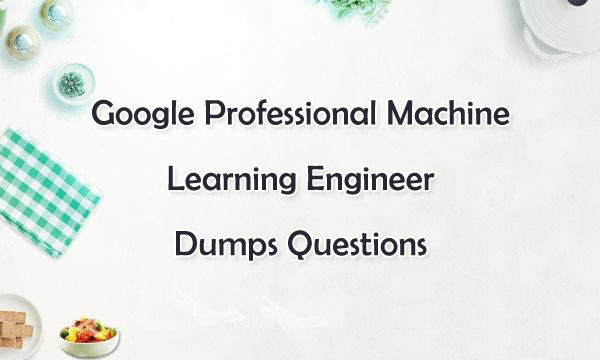Google Professional Machine Learning Engineer Dumps Questions
March 16,2021 02:16 AM
Do you want to become Google Professional Machine Learning Engineer? If so, you can choose to take Professional Machine Learning Engineer exam and become certified. A Professional Machine Learning Engineer designs, builds, and productionizes ML models to solve business challenges using Google Cloud technologies and knowledge of proven ML models and techniques. To become Professional Machine Leaning Engineer, you need to be familiar with application development, infrastructure management, data engineering, and security. Related Google Professional Machine Leaning Engineer exam information is helpful in your preparation.

Google Professional Machine Learning Engineer Exam
Study the following Google Professional Machine Learning Engineer exam information can help you have a basic understanding of the test.
Length: Two hours
Registration fee: $200
Language: English
Exam format: Multiple choice and multiple select
Exam Delivery Method:
Take the online-proctored exam from a remote location.
Take the onsite-proctored exam at a testing center.
Recommended experience: 3+ years of industry experience including 1+ years designing and managing solutions using GCP.
Professional Machine Learning Engineer Exam Topics
Google Professional Machine Learning Engineer exam topics cover the following sections.
Section 1: ML Problem Framing
Section 2: ML Solution Architecture
Section 3: Data Preparation and Processing
Section 4: ML Model Development
Section 5: ML Pipeline Automation & Orchestration
Section 6: ML Solution Monitoring, Optimization, and Maintenance
Practice Google Professional Machine Learning Engineer Dumps Questions
Google Professional Machine Learning Engineer dumps questions can help you test all the above topics. Share some Google Professional Machine Learning Engineer dumps questions and answers below.
1.You have been asked to develop an input pipeline for an ML training model that processes images from disparate sources at a low latency. You discover that your input data does not fit in memory. How should you create a dataset following Google-recommended best practices?
A. Convert the images to tf .Tensor Objects, and then run tf. data. Dataset. from_tensors ().
B. Convert the images to tf .Tensor Objects, and then run Dataset. from_tensor_slices{).
C. Convert the images Into TFRecords, store the images in Cloud Storage, and then use the tf. data API to read the images for training
D. Create a tf.data.Dataset.prefetch transformation
Answer: C
2.You work for an online retail company that is creating a visual search engine. You have set up an end-to-end ML pipeline on Google Cloud to classify whether an image contains your company's product. Expecting the release of new products in the near future, you configured a retraining functionality in the pipeline so that new data can be fed into your ML models. You also want to use Al Platform's continuous evaluation service to ensure that the models have high accuracy on your test data set. What should you do?
A. Keep the original test dataset unchanged even if newer products are incorporated into retraining
B. Extend your test dataset with images of the newer products when they are introduced to retraining
C. Replace your test dataset with images of the newer products when they are introduced to retraining.
D. Update your test dataset with images of the newer products when your evaluation metrics drop below a pre-decided threshold.
Answer: C
3.You are developing a Kubeflow pipeline on Google Kubernetes Engine. The first step in the pipeline is to issue a query against BigQuery. You plan to use the results of that query as the input to the next step in your pipeline. You want to achieve this in the easiest way possible. What should you do?
A. Use the BigQuery console to execute your query and then save the query results Into a new BigQuery table.
B. Write a Python script that uses the BigQuery API to execute queries against BigQuery Execute this script as the first step in your Kubeflow pipeline
C. Locate the Kubeflow Pipelines repository on GitHub Find the BigQuery Query Component, copy that component's URL, and use it to load the component into your pipeline. Use the component to execute queries against BigQuery
D. Use the Kubeflow Pipelines domain-specific language to create a custom component that uses the Python BigQuery client library to execute queries
Answer: A
Professional Machine Learning Engineer Exam Dumps PDF & SOFT | 1 Year Free Update | Money Back Guarantee
- Related Suggestion
- Google Professional Cloud Database Engineer Exam Dumps August 27,2022
- Professional Google Workspace Administrator Certification Exam Dumps August 11,2022
- Google Professional Cloud Security Engineer Exam Updated Dumps May 28,2021
- Google Professional Cloud DevOps Engineer Exam Dumps March 12,2021
- Google Associate Android Developer Exam Dumps February 02,2021

